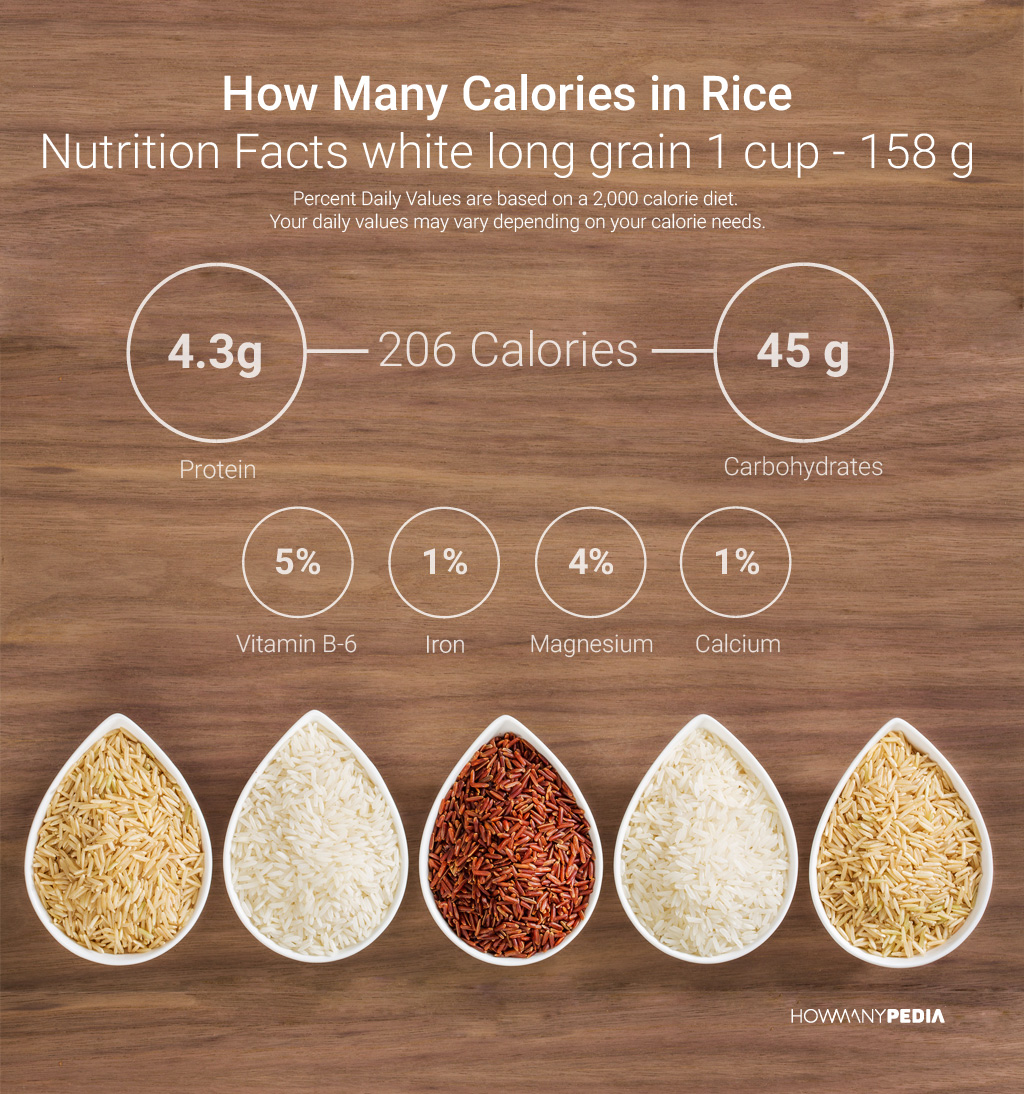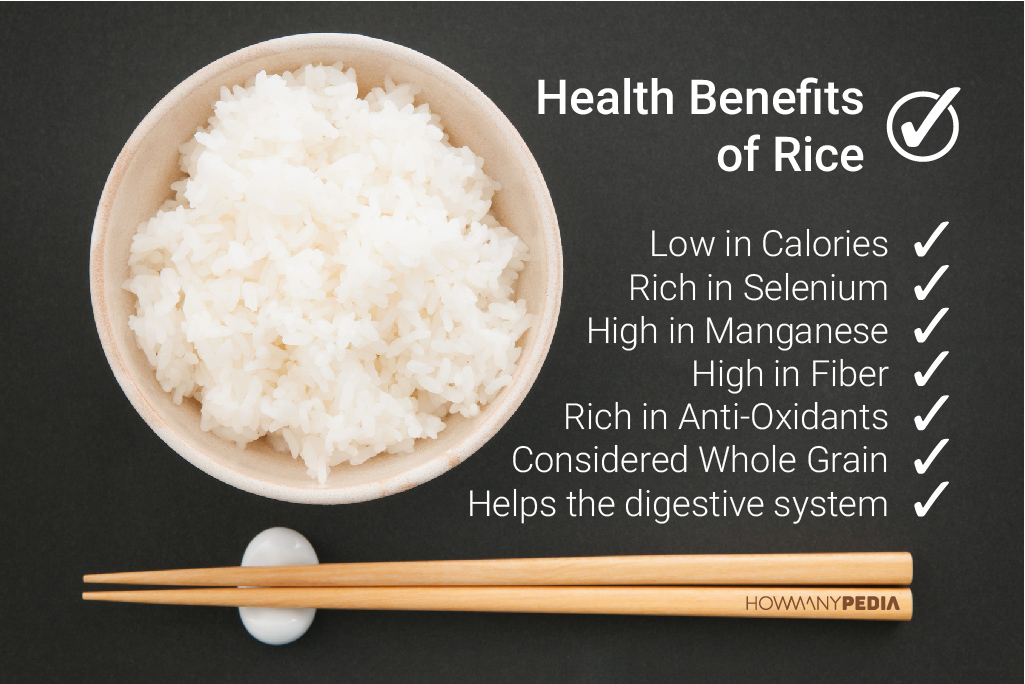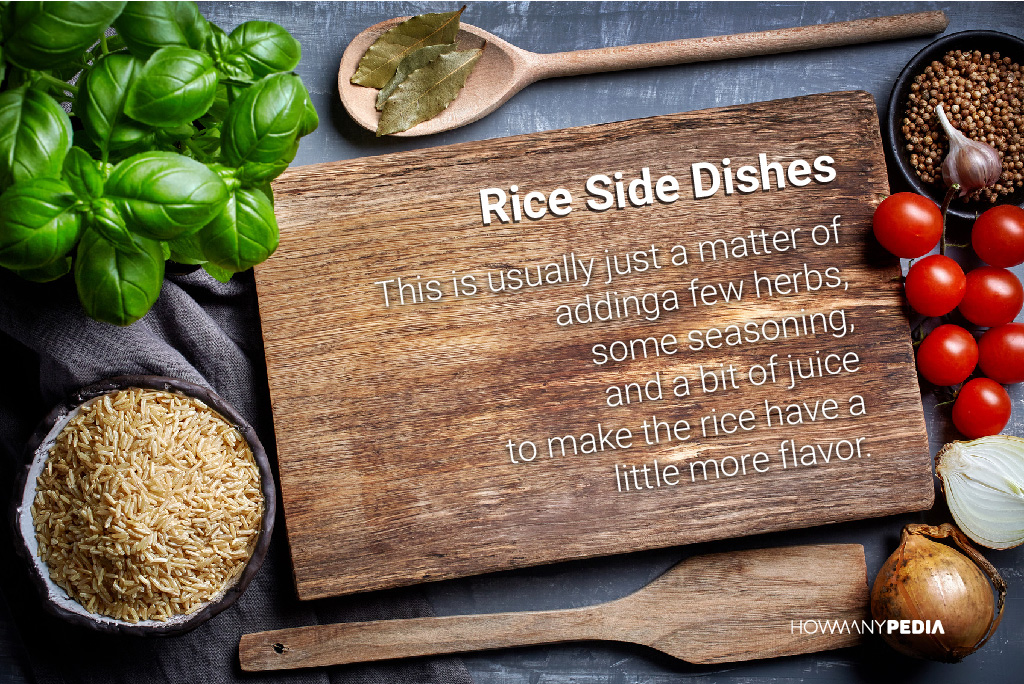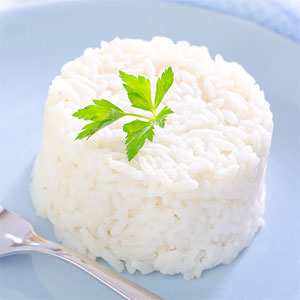How Many Calories in Rice
How many calories in rice? There are many different types of rice grown and served throughout the world, so it’s difficult to determine what the standard for calories in rice is. However, the average serving of rice, which is 1 cup, has about 200 calories but may have more depending on the variety of rice.
How Many Calories in Rice – Nutrition Facts

There are many types of rice available for human consumption. In fact, rice is the third most important crop in the entire world, due to the fact that it’s a staple in many types of ethnic cuisines.
It’s also great to cultivate in tropical or moist climates, and a serving of it can go a long way. For instance, imagine how many grains of rice are just in one serving, much less how many grains a person may eat in a lifetime.
The most popular types of rice include white rice, brown rice, basmati, and wild rice.
The type of rice dictates what the calorie count will be per serving, due to the fact that the various varieties have different chemical compositions and nutrients.
For example, a cup, or approximately 6 ounces of cooked long grain white rice is 206 calories. A cup of cooked long grain brown rice weighs slightly more at around 7 ounces and has about 216 calories.
This calorie difference can be attributed to the fact that brown rice has more fiber and vitamins than white rice. These properties will also help you feel fuller for longer, which allows you to eat less.
This is just for the most basic types of rice that are available.
If you were to wonder how many calories are in in basmati rice, the answer is about 260 calories for 1 cup of cooked rice. This is a higher calorie count than the others because each grain of basmati rice is much larger than its regular white rice counterpart.
Basmati rice is a type of rice grown throughout India. There’s also wild rice, which has a lower calorie count at about 160 calories per cooked cup.
These calorie counts also change depending on how you cook the rice and if you cook it from its dry form. The percentages listed are for rice that has been cooked with water only.
If you cook it with salt, butter, oil, or any type of broth, it will have different nutrition facts and a higher calorie content. Additionally, if you’re cooking parboiled rice or instant rice, the nutrition may be slightly different as well.
Of course, it’s safe to determine that any serving of rice you eat is going to be roughly 250 calories, which is a reasonable amount.
The average meal should be about 500-600 calories, so this leaves a lot of room for vegetables and protein on your plate.
It also leaves room for rice to be a big part of your diet if you enjoy eating it, since it’s low in calories by itself and can pair nicely with so many different foods. It’s also easy to prepare and tastes great.
Health Benefits of Rice

A great percentage of a person’s diet should come in the form of carbohydrates. Rice is an excellent carbohydrate because isn’t hard on your body in the way that crusty bread may be.
Your body breaks down these carbs into glucose, which is like a gasoline for your body in the regard that it needs glucose to function and to provide energy.
Rice also contains vitamins, such as B-vitamins, Vitamin D, Manganese, and Iron. These are great for your overall diet, as you need these vitamins each day.
By itself, rice is low in calories, so it doesn’t add any extra fat into your body, especially when eating in proper portion sizes.
The different varieties of rice offer up additional benefits to plain white rice. For instance, brown rice is great for people with diabetes, mainly because it’s easier for the body to process.
Additionally, there’s more fiber in brown rice, and it won’t make your blood sugar spike. The fiber also helps the digestive system and with any weight loss goals you may have.
Brown rice is even good for the brain and may be able to protect you from Alzheimer’s, which is a disorder that causes dementia, memory loss, and loss of other mental functions.
Overall, rice is a low-cost, easy-to-find food that will help you stay full and satisfied. The best benefit is that there’s a lot in one serving size, so you don’t have to feel like you’re being cheated when you eat it.
Rice Side Dishes

Although rice is a very important staple in your diet, it’s not often served as a main dish. It takes a sideline to protein and is featured in some of the best side dishes that exist.
Some of these side dishes leave the rice pure without a lot of added ingredients, such as rice pilaf, coconut rice, and different types of scented rice, like cilantro lime, or lemon pepper rice.
This is usually just a matter of adding a few herbs, some seasoning, and a bit of juice to make the rice have a little more flavor.
Other types of side dishes elevate the rice to rock star status. These dishes are things like Spanish rice, fried rice, risotto, and broccoli and cheese casserole.
This often adds not only seasonings and herbs but other ingredients as well, usually different vegetables and cheeses.
Some of these side dishes are more coveted than their main course counterpart. For instance, when you order Chinese food, you probably look forward to the rice as much as the chicken, pork, or shrimp entrée.
Rice can also be used as a side dish paired with virtually any type of beans or peas. They work well together and can feed a lot of people.
To make it extra special, simply cook your rice in a chicken or vegetable stock and season it a bit so that it pairs nicely with the cooked beans. Then you can either mix the two together or ladle the beans onto a heap of rice.
Sources:



